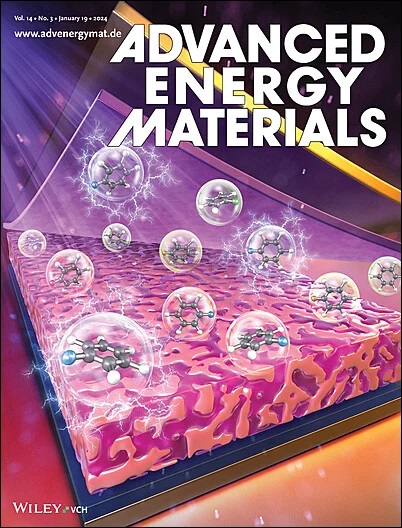Controlling Grain Boundary Segregation to Tune the Conductivity of Ceramic Proton Conductors
IF 24.4
1区 材料科学
Q1 CHEMISTRY, PHYSICAL
引用次数: 0
Abstract
Acceptor‐doped barium zirconates are of major interest as proton‐conducting ceramics for electrochemical applications at intermediate operating temperatures. However, the proton transport through polycrystalline microstructures is hindered by the presence of a positive space charge potential at grain boundaries. During high‐temperature sintering, the positive charge acts as a driving force for acceptor dopant segregation to the grain boundary. Acceptor segregation to grain boundaries has been observed in sintered ceramics, but the fundamental relationship between the segregation kinetics and the protonic conductivity is poorly understood. Here, a comprehensive study of the influence of acceptor dopant segregation on the electrochemical properties of grain boundaries in barium zirconate ceramics is presented. An out‐of‐equilibrium model material that displays no detectable Y segregation at its grain boundaries is explicitly designed. This model material serves as a starting point to measure the kinetics of segregation and the induced changes in grain boundary conductivity upon varying thermal histories. Furthermore, the electrochemical results from impedance spectroscopy to atomic resolution transmission electron microscopy, atom probe tomography, and DFT simulations are correlated. It is discovered that acceptor dopant segregation drastically increases the proton conductivity in both the model system and several other application‐relevant compositions.求助全文
约1分钟内获得全文
求助全文
来源期刊

Advanced Energy Materials
CHEMISTRY, PHYSICAL-ENERGY & FUELS
CiteScore
41.90
自引率
4.00%
发文量
889
审稿时长
1.4 months
期刊介绍:
Established in 2011, Advanced Energy Materials is an international, interdisciplinary, English-language journal that focuses on materials used in energy harvesting, conversion, and storage. It is regarded as a top-quality journal alongside Advanced Materials, Advanced Functional Materials, and Small.
With a 2022 Impact Factor of 27.8, Advanced Energy Materials is considered a prime source for the best energy-related research. The journal covers a wide range of topics in energy-related research, including organic and inorganic photovoltaics, batteries and supercapacitors, fuel cells, hydrogen generation and storage, thermoelectrics, water splitting and photocatalysis, solar fuels and thermosolar power, magnetocalorics, and piezoelectronics.
The readership of Advanced Energy Materials includes materials scientists, chemists, physicists, and engineers in both academia and industry. The journal is indexed in various databases and collections, such as Advanced Technologies & Aerospace Database, FIZ Karlsruhe, INSPEC (IET), Science Citation Index Expanded, Technology Collection, and Web of Science, among others.
 求助内容:
求助内容: 应助结果提醒方式:
应助结果提醒方式:


